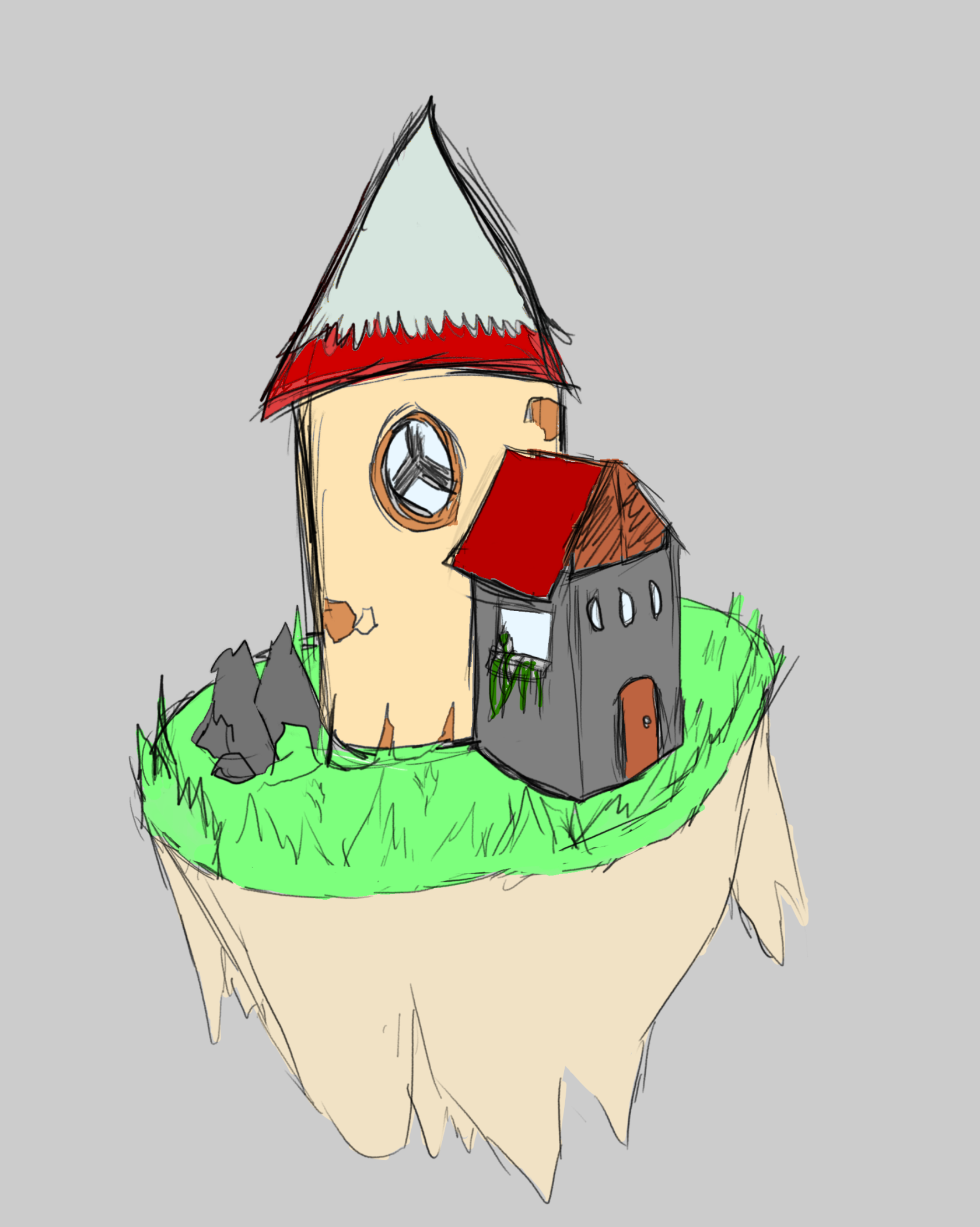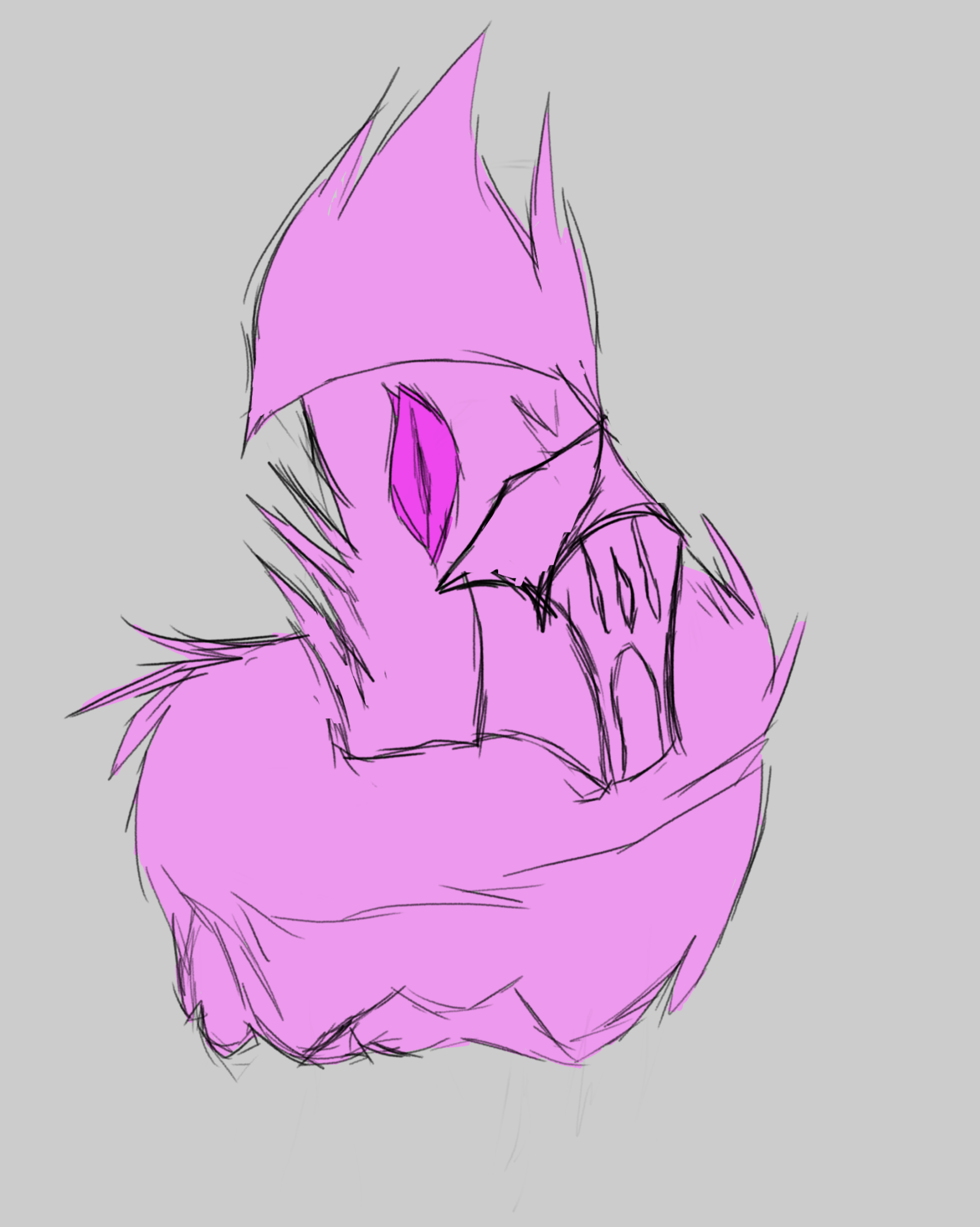The Oniric Plane
A plane born of every living thing’s perception, the Oniric Plane can be thought of as a distorted reflection of the Material one, inhabited by creatures closer to concept than animal, the Onirica. Its ever looming presence and its inescapable relationship with the Material Plane shape the world of Ego Breakers at large.
Where is it 🤨
The Oniric plane occupies the same physical space as the Material one, but in a kind of “mental superposition” determined by awareness.
What this means is that, fundamentally, the distinction between the planes is purely observer-based: creatures that believe them to be separate (or don’t know about the existence of the other at all) experience them as such, while more enlightened individuals can use the unique properties of the “world” at large to their benefits.
What is it 🤨
The Oniric Plane is the crystallization of every living organism’s consciousness, given (sort of) physical form, born of the Maker’s Heart when it died.
It has been built slowly throughout the life of the Material Plane and the rise and fall of civilization, and has served as an ancestral home to the creatures known as Gods.
How is it 🤨🤨
If a Material-born creature were to travel to the Oniric Plane (as Dreamstriders of old famously could) they would find a scattered, seemingly torn apart land, with great voids that extend into nothingness where less, or no life is present: those who travel there from the Material plane can experience different physical sensation from oniric matter (we’ll touch upon that in the “how does it work 🤨🤨🤨” chapter), but the great majority describes as looking like either:
- A formless black void, where every structure and creature is covered in and seemingly constructed by a slimy black substance that makes it hard to distinguish the floor from a drop. Despite having the consistency and appearance of some sort of ink or mucus, this substance doesn’t stain anything it touches.
- A hazy, vaguely rose-tinted dimension where fauna, flora and inorganic matter are composed of something similar to pillow stuffing, which creatures can seemingly harden at will to deambulate, flee or hunt. People with this perception report drops as being not hard to spot, but very frequent and often in very inconvenient places.
- A more or less “normal” scenery, with things such as brick buildings, grass and rivers; the fauna is usually reported as “very, very wrong”, however, with accounts ranging from mutating beasts which change appearance as soon as one looks away, to a number of seemingly unique grotesque specimen, ending in descriptions resembling what may be seen in the other two forms of the Plane.
 |
 |
|
| The "Normal" look of the Oniric world | The "Oniric" look | The "Void" look |
Despite the huge dynamic range of the landscape, some commonalities can be found throughout all of the reports, namely:
Surprisingly enough, sleeping in the Oniric Plane does not seem to have any long term effects on the majority of people: it is advised, however, that groups sleep a good distance away from each other in safe, Material-made abodes, as the uncontrolled thoughts during dreaming can lead to a very rude awakening (another topic that will be discussed in the next chapter).
How does it work🤨🤨🤨
The world within the Oniric World is shaped by its inhabitants’ thoughts and emotions, and due to the “split” mentioned in the opening of this section, that includes the whole of humankind and every creature that dwells within the Material Plane.
The effects of the Material plane’s inhabitants vary in strength according to the intelligence and number of creatures that reside in a particular area (for example, a humanoid hermit could have a far better understanding of its abode than a whole colony of ants could if let loose in the same space), producing 1-to-1 recreations in vastly populated or travelled areas such as cities or major infrastructure; extremely populated, well-documented or culturally relevant areas are reproduced so faithfully that contraptions such as trains, cars or even working vending machines can be found and operated, with varying levels of success.
As the conformation of the oniric plane is connected exclusively to the perception of the world, rather than its factual reality, many curious “artifacts” (differences between the planes) could be found if you were to compare the two side by side.
Almost any variation is possible, but some frequent examples are:
These factors, compounded with the ever present and unpredictable shifting, makes charting the Oniric Plane at large with any degree of accuracy a fool’s errand: the largest map one wouldn’t be laughed off the expedition for using would be roughly city-sized, and even that is guaranteed to have plenty of inaccuracies.
The last thing to note is that exactly one material, obsidian, seems to have a particular lack of connection to the Oniric Plane: this causes trinkets or even buildings that contain it in sufficient amounts to be wholly corporeal in the Oniric Plane and completely oblivious to its denizens and nature. Simply put, an obsidian object won’t shift or move based on the world around it, and any attempt to break or even damage it with Oniric means will be futile.
This is not to say that Obsidian-made objects are impervious to all damage, or to physical changes brought by Oniric abilities (Such as Egoes, Hubrises and the like), but they are effectively the one way the Materialfolk has to control, in some small way, the Oniric Plane.
What can it do 🤨🤨(😛)
The connection between the two planes is a two way street, and as such can be exploited by those who are keen to it; first, however, we should spend some words on the effect the Oniric Plane has on the Material.
Its pull is appropriately non-physical; as the perception of humanity shapes the Oniric Lands, the Onirics shape humanity’s thoughts, in an eternal feedback loop.
The main force behind this passive effect are the Onirics, who will be discussed at length within their section in the Factions paragraph.
The main application of the Oniric Plane’s characteristics is to exploit its ability to be morphed by thought.
Through a rite known as Awakening, chosen individuals have been allowed over the ages to cross the gap between the Planes while sleeping, ending up as a being of pure concept on the Oniric Plane.
If one were to then survive the huge shock of lacking a body (a task in ages past usually aided by someone already familiar with the process), they could try and connect with an Oniric, a task where nothing but the candidate’s character would be taken into account.
If such a bond were to be created they would awaken in the Material Plane, now blessed with tutelage from it: such people were called Awoken, bestowed with the Ego of the Oniric part of the duo.
Egoes would, in principle, grant the user the ability to freely modify the material plane down to the atom by focusing their thoughts: this is, however, practically impossible, as the human mind is in no way equipped for on-the-fly reality rewriting.
This process is mediated by the Ego itself: it being bound to an Oniric entity (and one usually already close or similar to the user) allows the Awoken to modify reality in an extremely controlled manner, starting from what they know best.
This usually takes the form of manifesting simple weapons or tools, such as knives, quills, sickles or in rare cases bigger instruments such as swords or bows.
The potential for Ego abilities, however, is boundless, and limited only by its user.
Not much research has been done in this regard due to lack of motivation and effort (turns out getting better at rewriting reality is quite risky), but some outlier geniuses have been known to be able to manipulate reality in a radius around them, leading to wondrous results.
It’s also noteworthy to specify that Awakening bonds are not exclusive: multiple people can be bound to the same Oniric entity, as was mostly the case with organized groups like the Dreamstriders, who all Bound to the remnants of Simeon, or the Waking, who did the same with Samaul.
Other than that, the Oniric Plane also served as passage for those who knew how to safely walk it and exploit its unique properties to infiltrate enemy lines, sneak past guards or assassinate heavily protected targets in the Obsidya Conquering Wars.

No comments to display
No comments to display